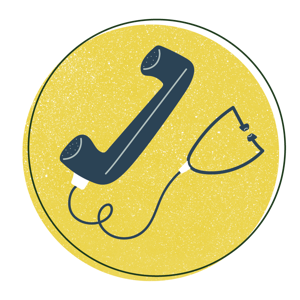The Influence of City Life on Sleep Apnea Diagnosis and Treatment
This article is second in the series: Sleep Apnea’s Health Disparities.
People with obstructive sleep apnea (OSA) who live in rural areas face a number of access barriers that prevent them from getting the diagnosis and treatment they need.
But living in more populated areas (cities and suburbs) can bring its own set of challenges.
This time around, we’ll look at diagnosis and treatment barriers for city and suburban people living with OSA.
The city’s surprising barricades
Life in the countryside isn’t perfect. Plenty of roadblocks to good healthcare exist in these far-flung regions. But when it comes to sleep, having dark skies at night, quiet evenings, and fresh air gives people living in rural settings certain advantages.
In the cities and suburbs, resources may be more accessible, but obstacles to OSA diagnosis or treatment still exist.
Getting to the sleep clinic
In cities, you can find sleep clinics everywhere, maybe even right down the street from your residence. But third-party protocols – from insurance payers or hospital system networks – may override that quick visit down the block. Your sleep study could be assigned, instead, to a clinic clear across town.
Economic disparity explains this barrier to access.1
People living in areas with lower home values may have less access to the healthcare services they need. They also may not own a vehicle and rely on public transportation.2

Car considerations
A doctor’s appointment clear across town can be hard to make if you can’t find parking. For those without a car, taking multiple buses, trains, or subways to get there (often after dark, and leaving early in the morning) means some people won’t make their appointments.2
Keep in mind, too: all that extra time lost may sometimes result in lost wages and added childcare expenses for many.
Insurance roadblocks
Because they’re so expensive, sleep studies require preauthorization from insurance payers. Someone with suspected OSA may need multiple visits:
- A daytime screening session
- An overnight diagnostic study (at home or at the lab)
- A second overnight study to determine treatment
- Multiple follow-ups following treatment protocols
Also, treatment for any insured person depends on how comprehensive and generous their coverage is. Some policies offer bare-bones coverage to positive airway pressure (PAP) therapy, for instance.
Insurance and PAP alternatives
Your access to other treatments – like hypoglossal neurostimulation or oral appliance therapy – also depends upon your coverage. When a doctor doesn’t prescribe alternatives to PAP, it may be because insurance won’t cover them. Out-of-pocket costs run too high otherwise.
Medicare or Medicaid providers may sometimes seem to further limit patient services and supply options to a much smaller number of sleep clinicians and suppliers.3
Jumping through hospital "hoops"
And speaking of systems, hospital system consolidation creates a whole new labyrinth for patients.4
When buyouts and mergers happen, doctors move to new systems. Our access to them may change if they’ve left our preexisting networks. Changes in hospital networks mean more “hoops” to jump through to get the care you need, not only for OSA, but for any chronic condition requiring maintenance.
Be prepared to advocate for yourself wherever and whenever possible. It can be easy to fall through the cracks when hospitals make large shifts and changes in policies or protocols.

Is telemedicine real?
It is, but you still may not have access to it.
COVID-19 has certainly prioritized the telemedicine option to more safely deliver care to more patients. But some doctors are still learning the technical ins and outs of telehealth.5
Even in big cities, some sleep clinics aren’t set up for virtual care. Either they can’t yet deliver on online appointments, or sessions may be limited to screenings and follow-ups.5
However, the home sleep apnea test partnered with a prescribed automatic PAP treatment option can cut down on safety and scheduling barriers for some.6
Pollution as a factor
Finally, cities – by the very nature of living in close quarters – deliver an environmental hit when it comes to sleep health.
Air quality
Air quality is of specific concern to people with OSA. If you live near industrial or highly trafficked areas, then you’re likely dealing with air carrying more particles, which make it hard to breathe. This doesn’t guarantee you’ll develop OSA, but even light smog aggravates sleep apnea, especially if it’s untreated.7
Thankfully, if you have OSA and treat it with PAP, you benefit from filtered air for several hours every night.
Noise and light
These 2 forms of pollution don’t impact your breathing while you sleep. But consider this: if you’re already struggling to use PAP – your mask doesn’t fit right or you can’t tolerate air pressure – noise and light pollution won’t make it easier. Noisy neighbors, living next to a major road or airport, super-bright LED streetlights, and business signs lit up 24-7 in downtown residential areas can make sleep harder in the city.1
Share your experience
Have you experienced barriers to sleep apnea diagnosis or treatment because of where you live? Join our forum discussion – read what others in our community have to say and share your experiences.
This article is part of a series: Sleep Apnea’s Health Disparities. Check out the other articles in this series!

Join the conversation